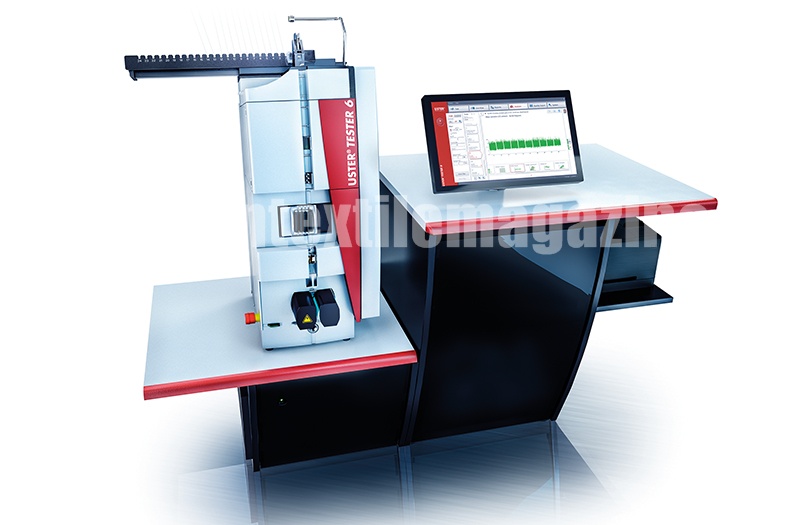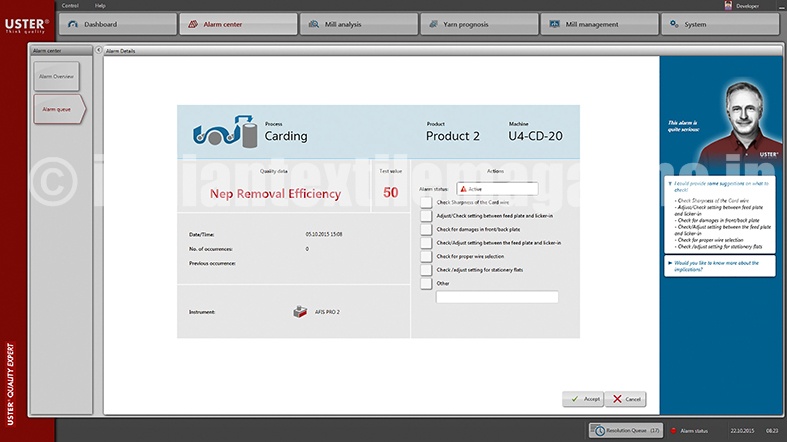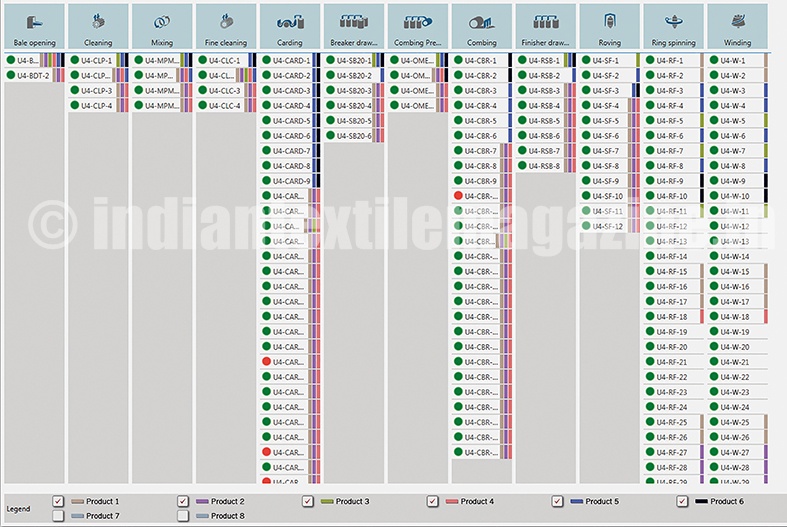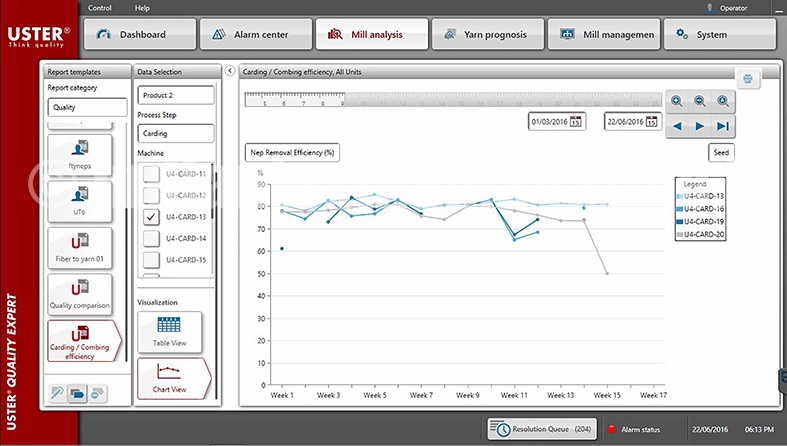The new USTER TESTER 6 has all the accuracy and power spinning mills have come to expect from this renowned laboratory instrument family. But its ability to integrate data from other quality measurement sources creates a true Total Testing Center, analyzing every spinning mill process with practical guidance on both quality and wider mill management issues.
What can be found in virtually every spinning mill laboratory? An evenness tester, most likely made by USTER. Since the launch of the original USTER GGP in 1948, some 14,500 evenness testers of successive generations have been delivered worldwide. Accurate measurement of the essential yarn parameters has been the key factor putting the USTER TESTER at the core of quality management over the decades.
At ITMA 2015 in Milan, the latest USTER TESTER in this highly-successful range was presented for the first time. So, what has changed between the existing USTER TESTER 5 and the new USTER TESTER 6? Nothing…and everything!
It could be said that ‘nothing’ has changed, but only in the sense that the USTER TESTER 6 remains the must-have instrument for testing evenness and imperfections in spinning mill laboratories. In reality, practically everything has changed, starting with the brand-new USTER Capacitive Sensor (Sensor CS), as well as a new Sensor HL, for hairiness length classification at up to 800 m/min.
And a real breakthrough, in terms of user-friendly protection against quality issues, is the Product Consistency Alert, which flags up potential defects before they arise.
Empowering management
Fundamentally, the new USTER TESTER 6 makes the leap from traditional laboratory testing to ‘Total Testing’ of every stage in the mill’s yarn production sequence. That means the USTER TESTER 6 is no longer described merely as an evenness tester – it now qualifies for the title of ‘The Total Testing Center’, giving managements the power to control both quality and productivity across the entire spinning mill.
USTER QUALITY EXPERT is the key to this whole-mill approach. It is the essential platform for managing a spinning mill with quality in mind, with the intelligence to collate and integrate laboratory test data from the USTER TESTER, USTER fiber testing instruments and USTER online monitoring systems.
To help mills understand and apply the data presented, USTER TESTER 6 incorporates Assistant Q, a new ‘staff member’ with unrivalled process expertise. Assistant Q analyzes and immediately alerts management to quality issues, possible causes and best remedies. He also evaluates and advises on a yarn’s performance downstream, based on application experience.
USTER QUALITY EXPERT is also ready for an expanded role, growing its capabilities as the mill extends its range of testing and monitoring equipment. The more USTER instruments are connected to the USTER TESTER 6 via USTER QUALITY EXPERT, the more information can be provided. With each addition, quality risks are minimized towards zero. Today, USTER AFIS PRO 2, USTER TENSOJET and USTER QUANTUM EXPERT 3 can already be connected. The USTER HVI1000, USTER TENSORAPID and USTER SENTINEL will follow, affording mills totally centralized management of all aspects of yarn quality.
Customizable reports and automatic analysis are valuable advantages, but real Total Testing also needs an extra plus point: intelligence. This starts with a system of alerts. The Total Testing Center creates a map of the individual spinning mill processes, and its alert system flags up any issues at each process stage: bale opening, carding, combing, finisher drawing, roving, ring spinning and winding.
The system pinpoints any problem, and analyzes its cause. At this point, Assistant Q comes into play. Loaded with 65 years of USTER know-how, Assistant Q is on call 24-7 to analyze every measurement from offline and online monitoring. For each alert, he proposes practical solutions and advises where and how to fix the problem. Interaction with Assistant Q makes the system even more intelligent, as it learns to recognize the main issues and quickly find the most efficient solution.
Assistant Q: a typical task
During one of Assistant Q’s endless shifts, an alert pops up in the carding section, with a red dot indicating that immediate attention is recommended. A tap on the touchscreen of the USTER QUALITY EXPERT brings up specific information about the alert. It identifies the product and machine affected in the cardroom, the date and time, and the source of data used in flagging up the irregularity.
In this case, the source of the data is the USTER AFIS PRO 2 and the problem, highlighted in red, is that nep removal efficiency is down to a critical level. Assistant Q is on the case, confirming in the column at the right of the screen that this alarm is quite severe, and offering proposals to eliminate the trouble. The nep removal efficiency report shows decreased efficiency at carding machine No.20, while the other cards are constant. Following the onscreen proposals from Assistant Q, the customer is quickly able to rectify the fault by changing the damaged licker-in wire on the offending card.
Intelligent analysis makes all the difference
Returning to the original question about what has changed from USTER TESTER 5 to USTER TESTER 6, it’s clear that the more accurate answer would be ‘everything’. If the USTER TESTER 6 was only a laboratory instrument, it would take a whole team of specialists – and a lot more time – to analyze and interpret the mass of data produced by the mill’s testing and monitoring instruments.
The Total Testing Center incorporated in USTER TESTER 6 has the power to analyze all that data and the intelligence to make practical use of it. Add in the user-friendly services of Assistant Q and it is clear that USTER TESTER 6 provides everything needed for successfully managing a spinning mill with quality in mind.




